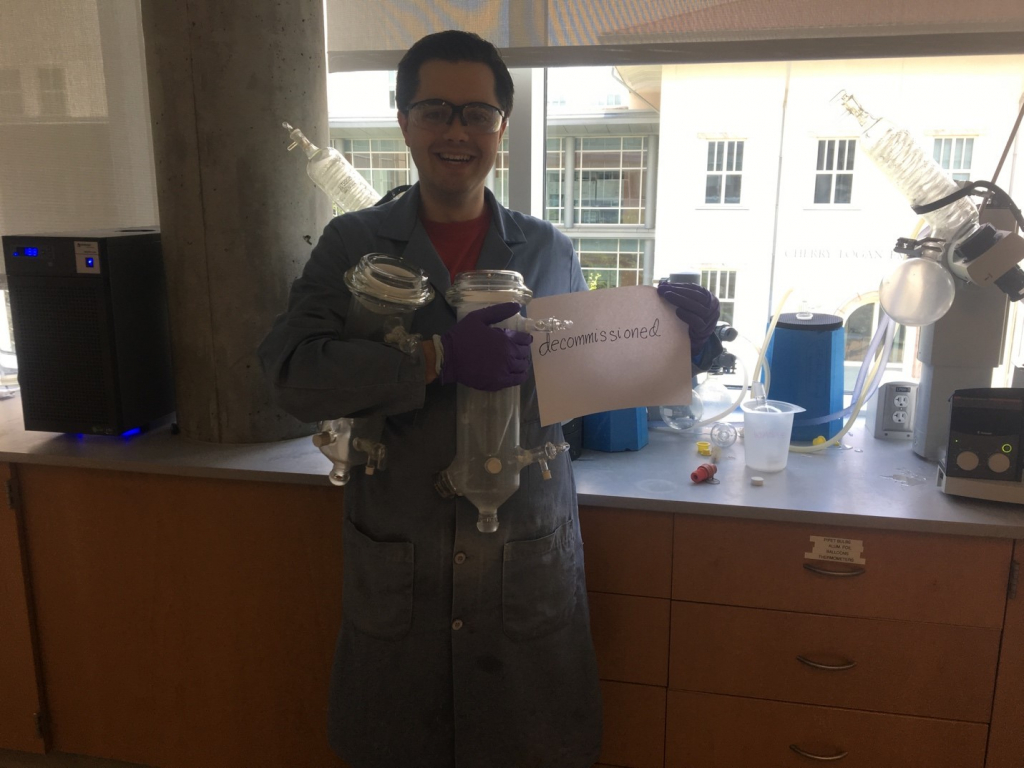Office of Sustainability Initiatives | July 24, 2018

As synthetic chemists, much of the Jui Research Group’s time is spent gently removing solvent from samples by evaporation using a device called a rotary evaporator—or rotovap, for short. Currently, their lab is set up with seven rotovaps. This means their lab uses a total of about 200 lbs of solid carbon dioxide (dry ice) per week. Dry ice is placed into each rotovap’s cold-finger condenser, which prevents the volatile solvents from being released into the air at the cost of emitting gaseous carbon dioxide. See pictures below to view the decommissioned cold-finger condensers in the hands of a Jui Graduate Student.
To combat carbon dioxide (CO2) emissions, the Jui Research Group sought new innovations for their lab space. Their objective was simple: to consume and emit less CO2 as a direct result of solvent evaporation. Earlier this year, they made a significant step towards success by implementing the addition of one chiller, and two coil-condensers, to their lab space.
This new equipment directly reduces their lab’s carbon footprint by replacing some of the original cold-finger condensers with coil-condensers that use recirculating chillers (see photo). Recirculating chillers use electricity to remove heat from condensers rather than solid CO2. Chillers also open up the opportunity to use energy produced from renewable resources.
The chiller the Jui Research Group purchased has the chilling capacity to support 2 rotovaps. With its implementation, they’ve been able to decommission 2 cold-finger condensers and reduce their dry ice consumption by more than half. They now consume only 50 lbs of dry ice per week. The remaining dry ice consumption is necessary because a CO2 condenser is still needed to evaporate particular solvents. The purchased chiller was fitted with 2 coil-condensers that they recycled from a retired lab in the department. See the coil-condensers attached to the rotovaps in the picture below.
Ultimately, the Jui Research Group learned that multiple options exist for cooling a laboratory rotovap. They found that the upfront cost of a recirculating chiller is advantageous in the long-term in both a practical and green sense. Although cheaper upfront, the cold finger set-up is more harmful to both a lab’s budget and long-term environmental impact. As the lab expands, they plan to implement more of these recirculating chillers for solvent removal.
Congratulations to the Jui lab for their innovative and sustainable practices!
Check out the Green Labs at Emory program for information on how your lab can become a Certified Green Lab and eligible for funding to implement innovative projects like this.
